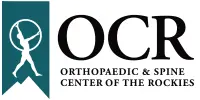When something isn’t right with our bodies, we often feel acute or chronic pain telling us that something is wrong. The reason for the pain can sometimes be obvious, such as breaking a bone or a muscle strain. Other times, however, we might feel pain that doesn’t have an obvious source or that we aren’t sure where it came from, but has been there for months on end. Knowing the difference between these two types of pain can help you understand your treatment options.
Chronic Pain
Chronic pain is generally thought of as pain that exists for three months or more, and that does not resolve in response to treatment. It most often affects the musculoskeletal system, such as bones or joints, and can cause pain and discomfort that can affect daily activity. Chronic pain is usually either age-related, genetic, or due to overuse and is generally progressive in nature, starting slowly and continually getting worse over time.
Common Chronic Orthopedic Conditions Can Include:
- Arthritis: This is a common condition that causes inflammation in the joints, resulting in pain and stiffness.
- Osteoporosis: This is a condition that weakens bones, making them more susceptible to fractures and breaks.
- Bursitis: This is a condition that causes inflammation in the fluid-filled sacs that cushion the joints.
- Nerve Damage: This can be caused by injury or disease and results in pain, numbness, and tingling.
- Past Injuries: Older injuries that have not healed properly can cause chronic pain.
- Chronic Lower Back Pain: This is a common type of chronic pain that can be caused by muscle strain, herniated discs, degenerative disc disease, and other conditions.
- Chronic Joint Pain: This is pain that affects the joints and can be caused by arthritis or other orthopedic conditions.
If you have chronic orthopedic pain, you may be prescribed medication to help manage the pain. In some cases, physical therapy may also be recommended to help stretch and strengthen the muscles and joints. If your pain is severe, you may be a candidate for orthopedic surgery and you should seek an orthopedic specialist.
Acute Pain
Acute pain is typically the most common type of pain that is usually associated with most general injuries or illnesses. This type of pain is most often linked to some type of trauma to the affected area, whether that be a car accident or a simple muscle strain. Signs of an acute injury can include sudden & severe pain, swelling, inability to place weight on lower limbs or extreme tenderness to upper extremities, a visible dislocation or break of a bone, or the inability to move a joint through a full range of motion. Acute injuries typically respond well to treatment and the pain will generally decrease as the injured area heals.
Common Acute Orthopedic Conditions Can Include:
- Dislocations: This is when a bone pops out of the joint socket.
- Fractures: This is when a bone breaks or cracks.
- Hernias: This is when an organ or tissue bulges through an opening in the muscle.
- Impingements: This is when a bone or tendon rubs against each other, causing pain.
- Sprains: This is when the ligaments that connect the bones are stretched or torn.
- Strains: This is when the muscles or tendons are stretched or torn.
If you have acute orthopedic pain, your doctor may recommend rest, ice, and over-the-counter pain medication. In some cases, you may also need to wear a splint or brace to immobilize the affected area. If your pain is severe, you may need orthopedic surgery to repair the damage.
Knowing the difference between chronic and acute pain can help you better understand your treatment options for your orthopedic issues. If you are concerned about any pain you are feeling, seek medical care immediately.
To schedule an appointment, fill out our online appointment request form today!

